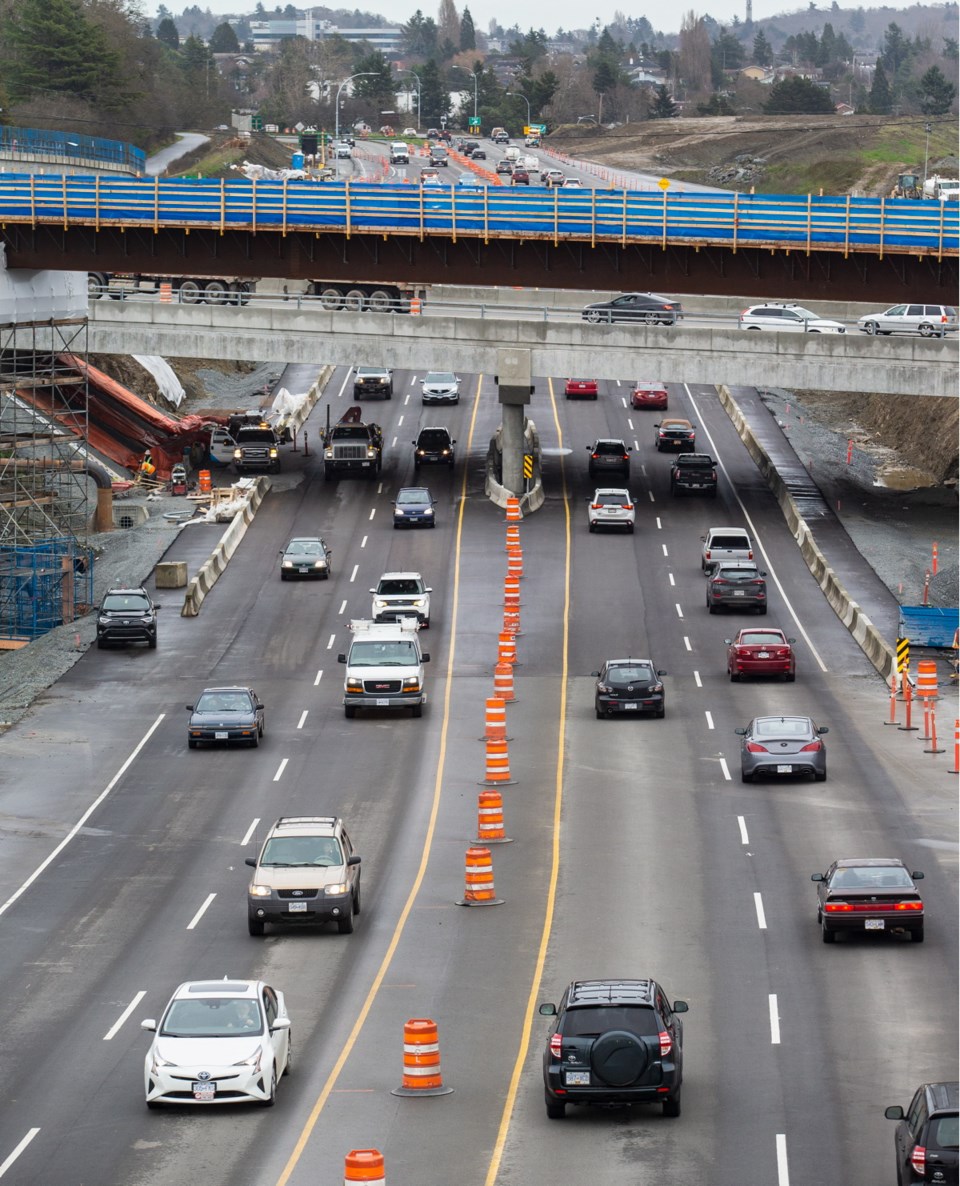“This,” I declared, “must be what it felt like to be Neil Armstrong.”
Just kidding. It only took Armstrong four days to get from Earth to the moon in 1969.
West Shore commuters, on the other hand, usually need at least five to get downtown in the morning.
Or maybe it just feels that way. Or felt. Past tense.
The cork was finally pulled from the biggest bottleneck on Vancouver Island on Thursday, allowing Trans-Canada Highway traffic to flow freely through the McKenzie interchange.
You can forgive giddy commuters for celebrating as though it were the moon landing, or the Relief of Mafeking, or what it might feel like should the Canucks ever win the Stanley Cup.
How much of a change did it make? At 7:45 a.m., it took 3.5 minutes to drive from the Helmcken overpass to McKenzie. That’s 37 km/h, which isn’t anywhere close to the highway speed limit, but is lightning fast compared with the norm for that time of day, when traffic often stops dead. Multiply that effect by the length of the feeder routes, and you had social-media users crowing about shaving 20, 25 minutes off their journeys Thursday.
Now, it must be noted that this is the week before Christmas, when traffic is relatively light anyway.
The real test will come after the holidays.
It must also be acknowledged that many people aren’t happy to see the interchange at all. The argument against the project, against all automobile-centric concrete fests, is that they literally pave the way for more sprawl, more cars, more greenhouse gases. Build it and they will come. It takes no time at all before the highways are plugged again. The concept is known as induced congestion.
True, but the counter-argument in this case is that the sprawl, and the attendant congestion, is already here. The highway leading into Victoria went through a major expansion in the 1990s, including the opening of the Colwood and Helmcken interchanges in 1997. The population of Sooke and the West Shore took off after that, jumping from 52,000 in 2001 to 78,000 in 2016.
Widening the highway without building the McKenzie interchange was like increasing the size of a restaurant but not hiring more cooks.
For the tens of thousands of commuters slowly rotting to death while creeping along in their exhaust-belching cars, the question wasn’t whether the interchange should be built, but why it took so long.
The work was actually approved in 1989 — just 20 years after the moon landing — when B.C.’s Social Credit government decided to upgrade the Trans-Canada between Tillicum Road and Goldstream to freeway status as part of the Vancouver Island Highway Project, which would stretch all the way from Victoria to Campbell River.
Ah, but when the latter was completed in 2001, the interchange was nowhere to be found. That’s because it had been shelved in 1996, with the decision coming down to both a capital-spending freeze and internal wrangling in the NDP government of the day. Some New Democrats worried the project’s intrusion on Saanich’s Cuthbert Holmes Park would create a backlash.
It wasn’t until the federal election of 2015, when Stephen Harper promised Ottawa would pitch in $32.6 million toward the $85-million cost, that the project was revived. That budget eventually rose to $96 million. (In 2000, they estimated it would be $17 million.)
The project isn’t done yet, either. The biggest bits still to come include a loop that will carry inbound highway traffic onto McKenzie, and lanes that will carry traffic from McKenzie onto the highway heading up-Island. The whole thing is supposed to be complete this summer.
The Transportation Ministry doesn’t share the fear that the opening of the interchange will merely move the congestion one traffic light farther down the highway, to Tillicum Road. That’s because close to one-third of inbound Trans-Canada traffic peels off at the interchange, almost all of it exiting onto McKenzie.
There’s still congestion around Tillicum right now, though, thanks to the construction of a priority bus lane south from the Burnside bridges to Tolmie Avenue. That work is to be finished this spring, giving buses a straight shot all the way downtown. If they work as intended (and if the transit system is beefed up), the bus lanes could be a game changer in getting people out of their cars.
But that’s in the future. Today, there’s a general sense of happiness that Thursday’s switchover went smoothly, albeit a couple of hours behind schedule. Northbound lanes were open by 4:30 a.m., southbound by 5:30.
“The key indicator this morning was not seeing any queuing,” said Janelle Staite, the Transportation Ministry’s deputy regional director.
That said, ministry staff will be monitoring flows after Jan. 6 — once volumes are back and drivers have become used to the new configuration — to see if the timing of the remaining traffic lights needs tweaking.



